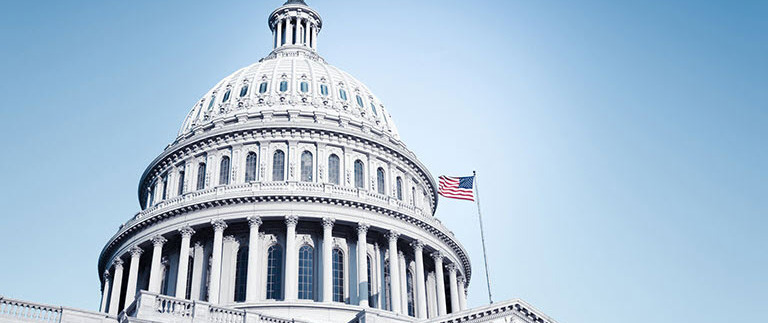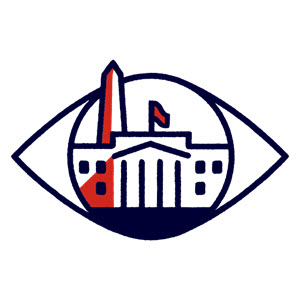How Recent Legislation Is Affecting Employers' Leave Offerings and PPP Eligibility

As part of a multi-pronged approach to help the country overcome the economic effects of the virus, the U.S. government recently passed new laws and updated existing ones. This piece offers answers to questions asked during a recent webinar on COVID-19 legislative updates.
In response to the economic fallout caused by the COVID-19 pandemic, the United States government passed the Families First Coronavirus Response Act (FFCRA), the Consolidated Appropriations Act (CAA) and the American Rescue Plan Act (ARPA). Additionally, the government passed the Coronavirus Aid, Relief, and Economic Security (CARES) Act, which included the Paycheck Protection Program (PPP). While this legislation offered support to millions of Americans, it left employers with some outstanding questions.
Here are some of the frequently asked questions and answers collated from a recent webinar featuring ADP leaders and legal professionals, who discussed legislative updates brought about by COVID-19.
Q. Under the American Rescue Plan Act, is paid family leave (PFL) required by employers with under 50 employee equivalents?
A. In contrast to the FFCRA, which required most employers to offer paid sick and family leave under specified conditions, under the ARPA, PFL is not required by employers of any size. However, employers with fewer than 500 employees who voluntarily offer qualifying paid sick leave (PSL) or PFL are entitled to tax credits for amounts paid, subject to the limits set forth. An additional 80 hours' worth of PSL credits are available per employee for the period of 4/1/2021–9/30/2021, regardless of whether the employee took PSL or not during the period of 4/1/2020–3/31/2021.
Q. If an employee used the original 80 hours of family leave, do they receive a new bucket of 80 hours?
A. Yes, whether or not an employee used the originally allocated 80 hours of paid sick leave during the period of 4/1/2020–3/31/2021, if their employer is covered, the employer may take up to another 80 hours' worth of tax credits for leave taken between 4/1/2021–9/30/2021. The original 80 hours for 2020 do not carry over if the employee did not use it.
Q. If an eligible employee took 80 hours of PSL in 2020, does the company have to allow the eligible employee another 80 hours in 2021?
A. No, it is totally voluntary. The company does not have to allow any additional PSL.
Q. Can employers retroactively claim credit for any paid leave distributed to employees getting vaccines prior to April 1, 2021?
A. No, the provision is not retroactive. Credit for leave taken for vaccination will only be available 4/1/2021–9/30/2021.
Q. Why would a company not offer PSL and PFL? Are the tax credits the same as during the FFCRA? Or would the company not get the PSL/PFL costs back from the government?
A. There is nothing in the ARPA that requires an employer to offer either paid sick or paid family leave; it is purely voluntary on the part of the employer. An employer may wish to offer only a certain amount of paid leave, and so may offer only the 80 hours of PSL, or only a limited amount of PFL, although the reasons an employee may take credit-eligible leave are now essentially the same. The same monetary limits apply for PSL, i.e., up to $511 or $200 per day. Under ARPA, the first two weeks need not be unpaid, meaning employers may receive credit for up to 12 weeks of PFL with a maximum credit amount of $12,000. Employers must observe the definitions and restrictions of the FFCRA leave law, as amended by the ARPA, to qualify for the tax credit.
Q. Can the FFCRA employee and family leave now be applied to everyone for every situation, or is the family option still only in cases with children/family members?
A. Under the ARPA, all of the reasons for leave are available for both PSL and PFL. PFL is no longer limited to situations where an employee is caring for a child due to school or childcare issues.
Q. We offered PSL to employees with COVID in 2020 as per our usual policies but did not report FFCRA wages on their W2s as we were unaware of the requirement. Do we need to take any corrective action and can we still retroactively claim the credit?
A. Yes, if you qualified for the FFCRA credit but did not take it, you may amend your employment tax returns to take it.
Q. We already received our PPP loan forgiveness in full. In the third quarter of last year, our revenue dropped less than 25% compared to the prior year. Do we still qualify for a second loan?
A. In order to be eligible to receive a Second Draw PPP loan, the borrower needs to be able to document revenue declines of 25% or more in any calendar quarter of 2020 compared to the same quarter of 2019. The borrower may select the relevant quarter for comparison. The SBA has said that borrowers can satisfy this obligation by producing evidence of gross receipts as well as documentation showing an annual decline of at least 25 percent (since at least one quarter must have declined by 25 percent to have an annual decline of 25 percent). Also, remember that borrowers can exclude from their revenue figures the amount of PPP funds that were forgiven from their First Draw loan.
Q. Since PPP only covers 2½ months, can you get retention credit for wages for the remaining part of the year?
A. Remember that only those wages for which the borrower applies for PPP loan forgiveness need to be excluded. So, if you submit only eight weeks' worth of wages for forgiveness, you can seek to apply wages from outside this eight-week window for the ERTC, assuming you meet the other requirements for the ERTC.
Q. With respect to the PPP, what are the repercussions if an employer terminates an employee for cause or lay off due to eliminating a position?
A. A borrower may exclude FTE employee reductions for (1) any positions for which the borrower made a good-faith, written offer to rehire an individual who was an employee as of February 15, 2020, and the borrower was unable to hire similarly qualified employees for unfilled positions on or before (a) December 31, 2020, for a PPP loan made before December 27, 2020, or (b) the last day of the Covered Period, for a PPP loan made after December 27, 2020; (2) any positions for which the borrower made a good-faith, written offer to restore any reduction in hours, at the same salary or wages, during the Covered Period and the employee rejected the offer, and (3) any employees who during the Covered Period (a) were fired for cause, (b) voluntarily resigned, or (c) voluntarily requested and received a reduction of hours. Employment level reductions in these cases do not reduce the borrower's loan forgiveness.
ADP's compliance experts are dedicated to helping employers and HR leaders understand this complex legislative information as it develops.
To read more frequently-asked questions and learn more about the FFCRA, CAA, ARPA, PPP and how to apply them to your business, access our on-demand webinar, Special Edition: COVID-19 Legislative Updates – American Rescue Plan Act.



